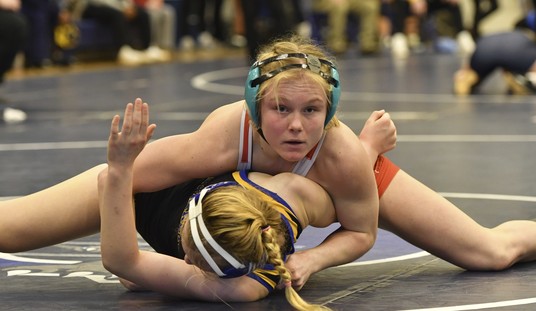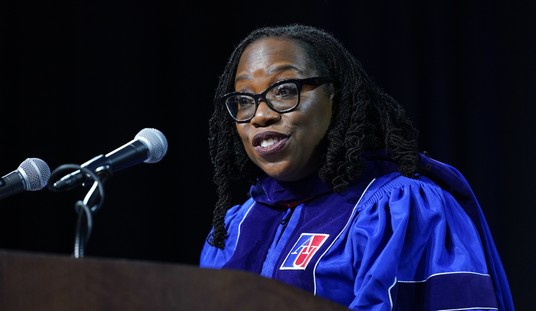As I wrote last week, forget about the arguments on potential fraud. Instead, think of just how badly the New York vote-by-mail primary has been handled from just a logistics point of view, and extrapolate that into fifty states in a general election. The New York Times reports today that the vote count for the June 23 primary has still not been completed, and disqualified ballots are still piling up by the thousands:
Election officials in New York City widely distributed mail-in ballots for the primary on June 23, which featured dozens of hard-fought races. The officials had hoped to make voting much easier, but they did not seem prepared for the response: more than 10 times the number of absentee ballots received in recent elections in the city.
Now, nearly six weeks later, two closely watched congressional races remain undecided, and major delays in counting a deluge of 400,000 mail-in ballots and other problems are being cited as examples of the challenges facing the nation as it looks toward conducting the November general election during the pandemic. …
Election lawyers said one area of concern in New York City was that mail-in ballots have prepaid return envelopes. The Postal Service apparently had difficulty processing some of them correctly and, as a result, an unknown number of votes — perhaps thousands — may have been wrongfully disqualified because of a lack of a postmark.
Thousands more ballots in the city were discarded by election officials for minor errors, or not even sent to voters until the day before the primary, making it all but impossible for the ballots to be returned in time.
Six weeks. For a primary. What happens in a presidential election using vote-by-mail systems that have similar logistics problems? That puts the final first count into mid-December, just a couple of weeks before the deadline for the Electoral College, usually around January 6. In New York, there won’t be much suspense over who won the presidential election (although there might be challenges aplenty in congressional and state races). However, we can expect all sorts of challenges to counts and then to ballots themselves in battleground states where the failure rate of mass vote-by-mail far exceeds the distance between the two presidential candidates.
Suddenly, we’re looking at not just one Florida 2000 situation but potentially several, and this time with much less time to process those challenges. Congress can delay the Electoral College vote, but not for long; the presidential term ends at noon on January 20 by explicit constitutional mandate. If we don’t have a president elected at that time, we also won’t have a vice president, which means the presidency temporarily goes to the speaker of the House — only we won’t know who that might be, because potentially hundreds of House seats may be up in the air by the time Congress is supposed to reconvene in a new session.
New York isn’t just an outlier either, as Salena Zito pointed out last week. Pennsylvania had the same problems in its primary:
According to data provided by the Pennsylvania Department of State, the number of mail-in ballots was 1,224,215 out of a total vote number of 2,877,749. Traditional absentees were 236,231.
This meant that the number of Pennsylvanians who showed up in person at the polls on primary Election Day was 1,361,231, making it for the first time in this state’s history that in-person voting was eclipsed by votes received by mail. …
On the eve of the election, Democratic Gov. Tom Wolf, citing civil unrest and a surge in ballots, signed an executive order for six counties to extend the deadline for county election offices to receive absentee or mail-in ballots to 5 p.m. June 9, though they had to be postmarked no later than Election Day itself — June 2.
The data shows that 15,610 ballots statewide were not counted because they arrived late. A grand total of 37,119 were not counted because either the ballot was undeliverable, the label was canceled for one reason or another, or there was no signature accompanying the ballot.
In 2016, Donald Trump won Pennsylvania over Hillary Clinton by the slim margin of 40,000 votes — the first time a Republican had won the Keystone State’s electoral votes since George H.W. Bush did it in 1988.
That’s a total of 1.46 million votes by mail combined, with 52,729 failures in both categories. That’s a failure rate of 3.6%, far exceeding the percentage of victory for Donald Trump in all three Blue Wall states four years ago, as well as Hillary Clinton’s margin of victory in Minnesota. The implications of using systems with that high of a failure rate are immense; in an election where 130 million votes get cast, 4.7 million voters can expect to be disenfranchised at a 3.6% failure rate.
That would be a massive disaster for electoral credibility. Nonetheless, Nancy Pelosi wants to go full speed ahead on mass vote-by-mail in November:
House Speaker Nancy Pelosi said Sunday that mail-in voting in the upcoming election will be an essential option for Americans‘ safety and well-being, despite President Donald Trump’s claims that mail-in voting will lead to fraud and delays.
On ABC’s “This Week,” Pelosi went on the offensive about Trump’s claims — noting that the president’s family members, including Donald Trump Jr., advocated mail-in voting for a special election earlier this year in California.
“I know that Republicans know how to do mail-in voting,” Pelosi said.
Fraud’s not the issue, or at least not the pressing issue. The voting system itself has too many points of failure and delay, and introduces too much ambiguity, to produce reliable results. Those risks are present in absentee voting as well, but the normal volume is minimal enough that those failures don’t threaten the overall results. The dry runs of mass vote-by-mail are bad enough to warn all but the most unreasonable away from their use.
If we can go to protests and shop at Walmart, we can vote in person. And all of the data we have in 2020 shows that we must vote in person.








Join the conversation as a VIP Member